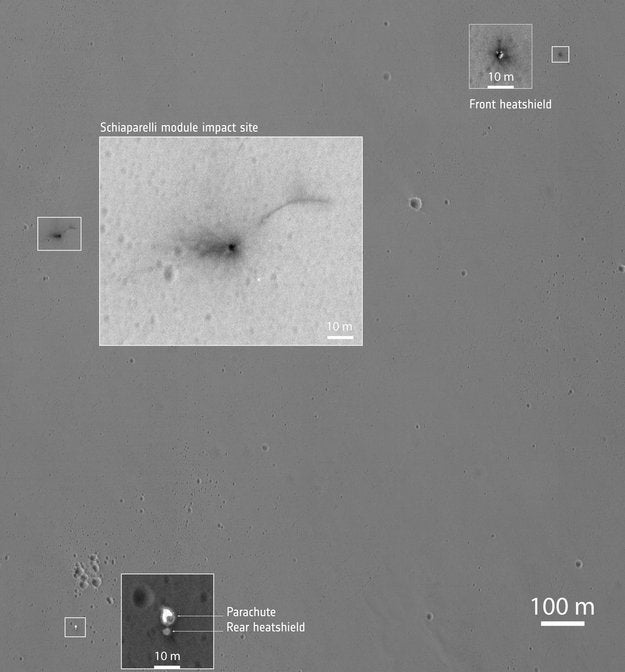This article was published in Scientific American’s former blog network and reflects the views of the author, not necessarily those of Scientific American
A lot of things can go wrong on the way to another planet. I've written about this in the past, and specifically about the beastly statistics for exploring Mars ("The Long Hard Road to Mars").
Two key challenges for martian exploration (and perhaps colonization one day) are that: (1) round trip light travel time to Earth ranges from 4 to 24 minutes - depending on the relative Earth-Mars position, and (2) the atmosphere of Mars is much less dense than that of the Earth - at the surface the atmosphere is barely 2% as dense as Earth's.
These two issues create enormous complications for incoming spacecraft (with intersect velocities typically around 5 kilometers-a-second, similar to the escape velocity on Mars). Real time control by experts back on Earth isn't an option due to the communication delay, and there's not a great deal of atmosphere to help slow yourself down.
On supporting science journalism
If you're enjoying this article, consider supporting our award-winning journalism by subscribing. By purchasing a subscription you are helping to ensure the future of impactful stories about the discoveries and ideas shaping our world today.
Even though the surface gravity on Mars is only 3.7 meters/sec (compared to 9.8 meters/sec on Earth), the thin atmosphere means that the average terminal velocity hits a nail-biting 1,000 km/hour or so, compared to about 200 km/hour back home. That means you have to do a lot more work to shed speed.
Sadly for the Schiaparelli probe - dropping onto Mars on Oct 19th 2016 - these factors, combined with what appears to have been an onboard software issue, resulted in an explosive impact on the planet's surface.
NASA's Mars Reconnaissance Orbiter has now released more detailed imagery of the crash site, showing the front heat shield (ejected too early), parachute and rear heat shield (also ejected too early), and a rather sorry dark stain that - it is assumed - was Schiaparelli's high velocity endpoint.

The parts of Schiaparelli, seen from orbit. Credit: NASA, JPL-Caltech and University of Arizona
The dark crater is thought to be about half a meter deep, and the asymmetric shape of the scattered material may be due to the explosion of hydrazine fuel tanks upon impact.
It's bad luck for this demonstrator mission - although all engineering data has value. It's also yet another reminder of just how hard interplanetary exploration is. Perhaps too it's a hint that somewhere down the line we may need to assign more sophisticated, perhaps intelligent, software to the task of coaxing missions down onto other worlds.